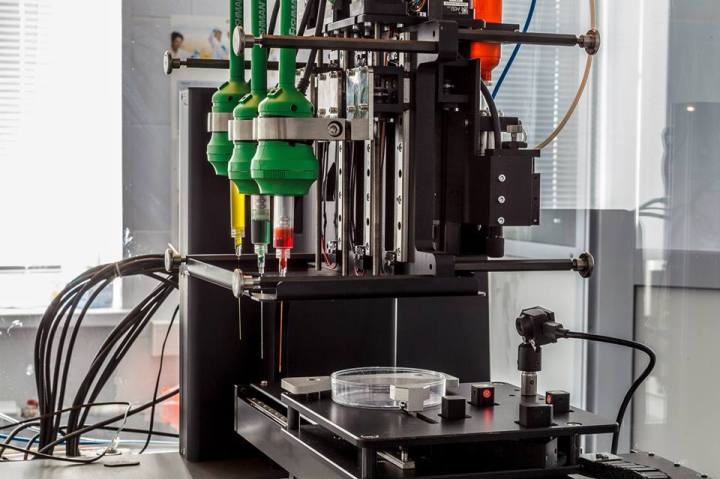
But while we’re not at that point just yet, a team of researchers at the U.K.’s University of Bristol recently announced a significant new advance in the form of a brand new bio-ink, a printable liquid material made out of living cells. In time it is hoped that this new bio-ink may be used for the 3D printing of cartilage and bone implants for damaged body parts such as joints.
“What’s different about our work is that we’ve got a hybrid system in which the bio-ink is made up of adult stem cells and two polymers, one of them naturally occurring and other artificial,” Dr Adam Perriman, a senior research fellow at Bristol’s School of Cellular and Molecular Medicine, tells Digital Trends. “The artificial polymer controls the phase behavior of the ink, which comes out as a liquid and becomes a solid. The second natural polymer, extracted from seaweed, then provides the structural fidelity needed to sustain cell nutrients.”
If talk of “naturally-occurring polymers” and “phase behavior” is a bit much to absorb on a Monday, consider that one of the big challenges with bioprinting is allowing effective nutrient access for the stem cells used in the bio-ink — thereby creating a material which can be used to print a living structure. The hybrid bio-ink created by Perriman and his colleagues achieves this. Once the cell nutrients have been introduced, the synthetic polymer is expelled, leaving just the stem cells and natural polymer. The results have already been used to 3D print tissue structures such as a full-size tracheal cartilage ring.
“Bioprinting is an absolutely enormous area in terms of its current growth and the scale of its eventual goal,” Perriman says. “We’re definitely excited about our developments in the field — and the work we’re continuing to do.”
Editors' Recommendations
- 3D printed cheesecake? Inside the culinary quest to make a Star Trek food replicator
- NASA is testing a 3D printer that uses moon dust to print in space
- The future of making stuff: Inside the evolution of 3D printing with Formlabs
- GPS-tracking, 3D-printed decoy eggs can help root out illegal poachers
- Printable wood biopaste could be the sustainable future of 3D printing


